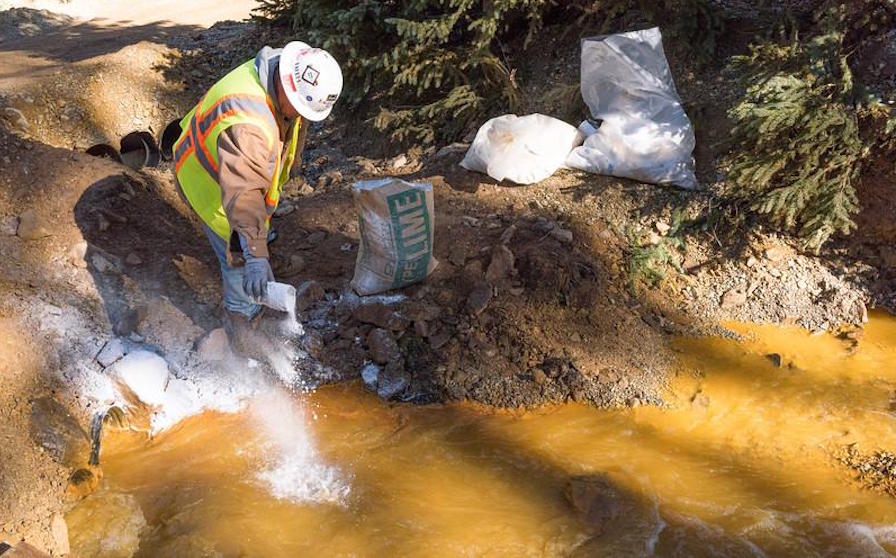EPA won’t pay mine spill claims

One week after releasing its final report on a 2015 toxic wastewater spill accidentally triggered by its own staff at a defunct Colorado mine, the US Environmental Protection Agency announced it won’t pay the $1.2 billion in claims filed by local governments, farmers, ranchers, tribes, and river-running raft companies that were seeking compensation for lost business or wages from the spill.
According to USA Today, the EPA said in a statement that it was “not legally able to pay” damage claims over the discharge from the Gold King Mine, because the Federal Tort Claims Act grants immunity to government agencies if something goes wrong from “discretionary” action taken by its employees.
“Therefore, the circumstances surrounding the Gold King Mine incident, unfortunately, do not meet the conditions necessary to pay claims,” the agency is quoted as saying in the release.
The decision can be appealed to the federal court system within six months.
And it probably will. Republican Senator Cory Gardner, Democrat Senator Michael Bennet and Republican Congressman Scott Tipton sent out a joint statement saying that they plan to work together to introduce legislation to ensure EPA will pay any legitimate claims.
The EPA has made over $29 million available in compensation including $1 million for the Navajo Nation affected by the spill and one of the claimants. Last month, it also agreed to pay $4.5 million to state, local, and tribal governments for their response to the breach. However, the agency turned down $20.4 million in other requests for past and future expense.
This is what happened
In August 2015, an EPA contractor hired to slow seepage of pollutants from the mine breached a tunnel wall, unleashing a torrent of wastewater that had built up behind the mountainside.
The orange-colored liquid contained 900,000 pounds of heavy metals, including arsenic, cadmium, iron, lead and mercury. Three-million gallons cascaded into a creek that feeds the Animas River and later poured downstream into the San Juan River in New Mexico and across Native American lands. The contaminated stream even reached Lake Powell in Utah.
The agency’s final revelations show that the spill lasted for about nine hours and, in terms of the total amount of metals released, it was comparable to four to seven days of ongoing acid drainage from the dormant mine, or the average amount of metals carried by the river in one to two days of high spring runoff.
No criminal charges were filed against the agency’s employee over the spill.
{{ commodity.name }}
{{ post.title }}
{{ post.date }}




6 Comments
Pat Wood
“No criminal charges were filed against the agency’s employee over the spill.”
Perhaps charges should be brought against EPA employees.
Altaf
Nobody likes fingers pointing towards them. EPA is fortunate that they are in a position where they refuse to acknowledge.
Ideally EPA would prefer to be busy pointing fingers at others, trying to close other businesses and squeeze penalties from businesses on one or the other pretext.
They can not swallow that their own staff started the spill.
Steve
After you are done criticizing the EPA for this spill, ask them about Flint, MI.
wags1
Nearly one million pounds of heavy metals contained in three million gallons of water (paragraph 7)? I don’t think so. Why can’t someone proof read this crap for scientific accuracy?
Matthew Cartier
It would be interesting to review the quailifications of the EPA manager and his staff who oversaw this “non-recourse” incident. I find it ironic in their “attempt” to destroy the Ameican mining industry, and the mining engineers that have lost their livelihood, that in their arrogance the EPA could make such a stupid mistake.
klgmac
“According to USA Today, the EPA said in a statement that it was “not legally able to pay” damage claims over the discharge from the Gold King Mine, because the Federal Tort Claims Act grants immunity to government agencies if something goes wrong from “discretionary” action taken by its employees.”
Laws are for the little people, not government employees.